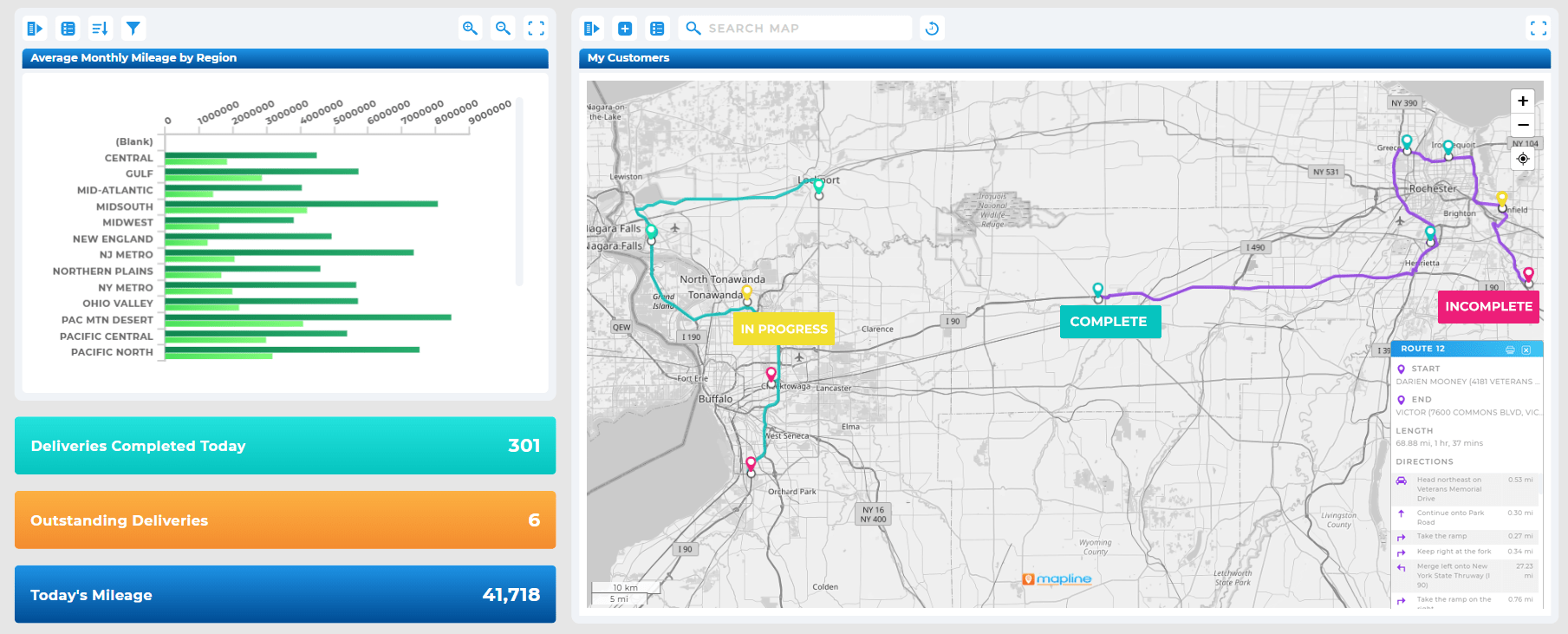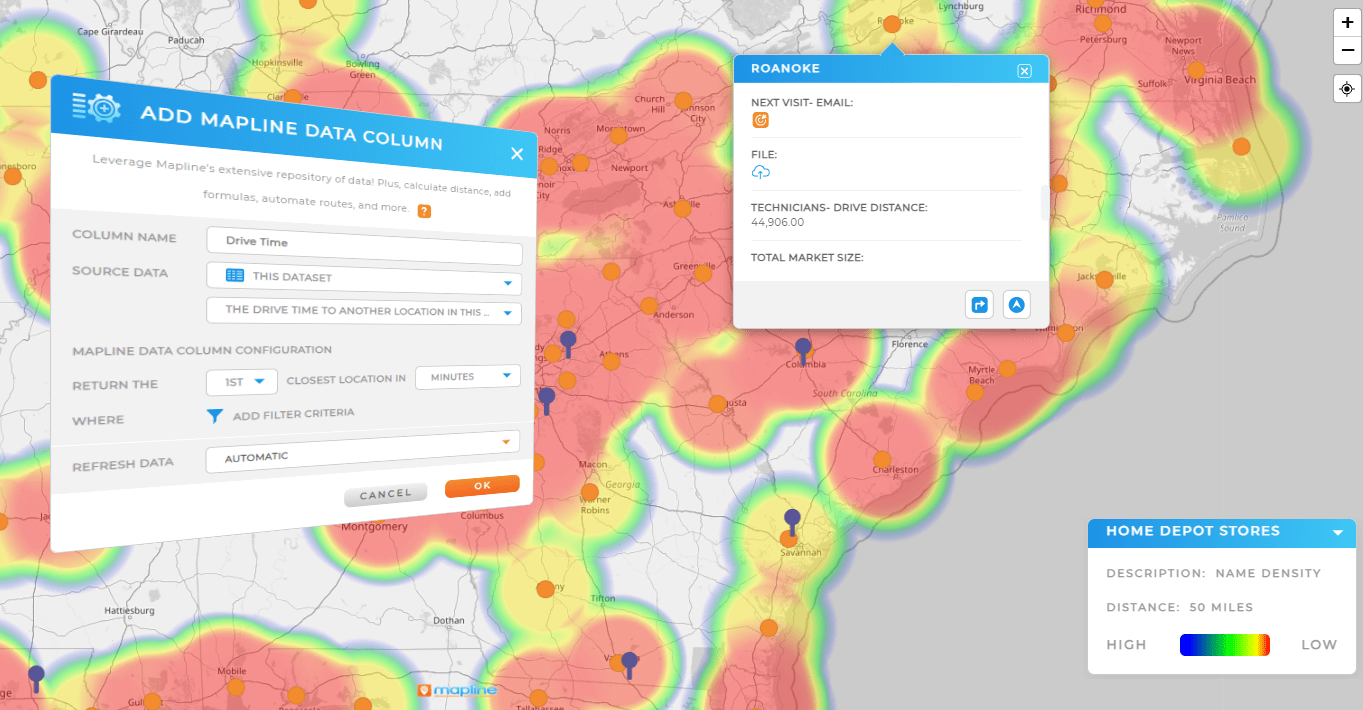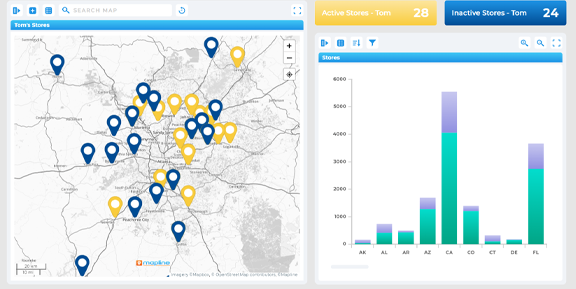- Blog
- Geo Mapping
- Mapping Software vs. Market Instinct: What Successful CEOs Know
In fast-moving industries, leaders must make decisions with confidence—often before the full picture is clear. While instinct plays a role, relying solely on gut feelings can lead to blind spots. That’s why the most successful CEOs and executives complement experience with mapping software. These tools provide a visual, data-driven foundation for decisions about market expansion, resource allocation, and operational strategy. When the stakes are high, online mapping software ensures leaders aren’t flying blind.
Instinct Has Its Limits
Experience, intuition, and pattern recognition are all powerful tools—but they’re even more effective when paired with hard data. In today’s business climate, leaders need to act quickly while managing complexity across regions, departments, and customer segments. Mapping software bridges the gap between instinct and evidence, offering visual clarity that accelerates decision-making without sacrificing accuracy. The ability to plot locations on a map, view sales coverage zones, and track customer trends in real time adds dimension to executive insight that spreadsheets alone can’t provide.


Pro Tip: Mapline’s Geo Mapping software is trusted by thousands of business leaders to visualize sales, territories, and customer locations—all in one intuitive platform.
Why the Best CEOs Use Mapping Software
Many top-performing leaders use map visualization software to stay informed and adaptable. These tools offer real-time visibility into performance, resource distribution, and market gaps—turning overwhelming data into focused strategy. Here’s how they create impact:
1. See the Full Picture at a Glance
Mapping tools make it easy to visualize complex data sets in seconds. Instead of sifting through Excel files, CEOs can spot trends instantly—from underperforming territories to over-serviced regions. With geographic information systems (GIS), this clarity becomes a daily asset for making smarter calls.

2. Turn Hunches Into Hypotheses
It’s not about ignoring intuition—it’s about validating it. When a CEO senses a market shift, mapping tools can confirm (or challenge) the gut feeling using layered data. Location intelligence platforms let leaders overlay competitor activity, customer locations, and demographic insights to explore what’s really happening beneath the surface.

3. Align Teams With Visual Direction
Great leaders don’t just make decisions—they get buy-in. Territory mapping solution helps leaders communicate plans clearly, showing how and why changes are being made. Visual maps simplify complex discussions around growth, resource shifts, or restructuring efforts—turning vision into alignment.

Key Features to Look For
Choosing the right location intelligence software starts with understanding the tools that drive the most value at the executive level. Prioritize solutions that offer:
- Instant map creation from Excel data
- Dynamic filtering and multi-layered data visualization
- Custom territory design and editing tools
- Mobile access for on-the-go decision support
- Integration with existing business systems
These features empower leadership to respond in real time and guide teams with clarity—whether reviewing sales performance, evaluating expansion sites, or analyzing regional trends.
While instinct plays a role in leadership, mapping software brings objective, data-driven clarity to complex decisions. It reveals patterns, risks, and opportunities that even the most seasoned instincts might overlook.
Mapping tools like Mapline provide spatial visualizations of customer data, sales trends, and operational performance—making it easier for CEOs to identify growth areas, optimize territories, and align strategy with real-world insights.
Yes. Mapline supports integrations with CRMs, spreadsheets, ERPs, and other business tools, allowing your data to flow seamlessly into visual dashboards and heat maps.
Executives use mapping tools to evaluate expansion opportunities, optimize delivery or service areas, rebalance sales territories, analyze customer behavior by location, and forecast market trends more accurately.
No—companies of all sizes use mapping software to enhance their market strategy. Whether you have five sales reps or fifty regions, the insights gained from spatial data can drive smarter, faster growth.









